blog»Digital Marketing»E-commerce Mastery: 7 Essential Marketing Strategies for 2024
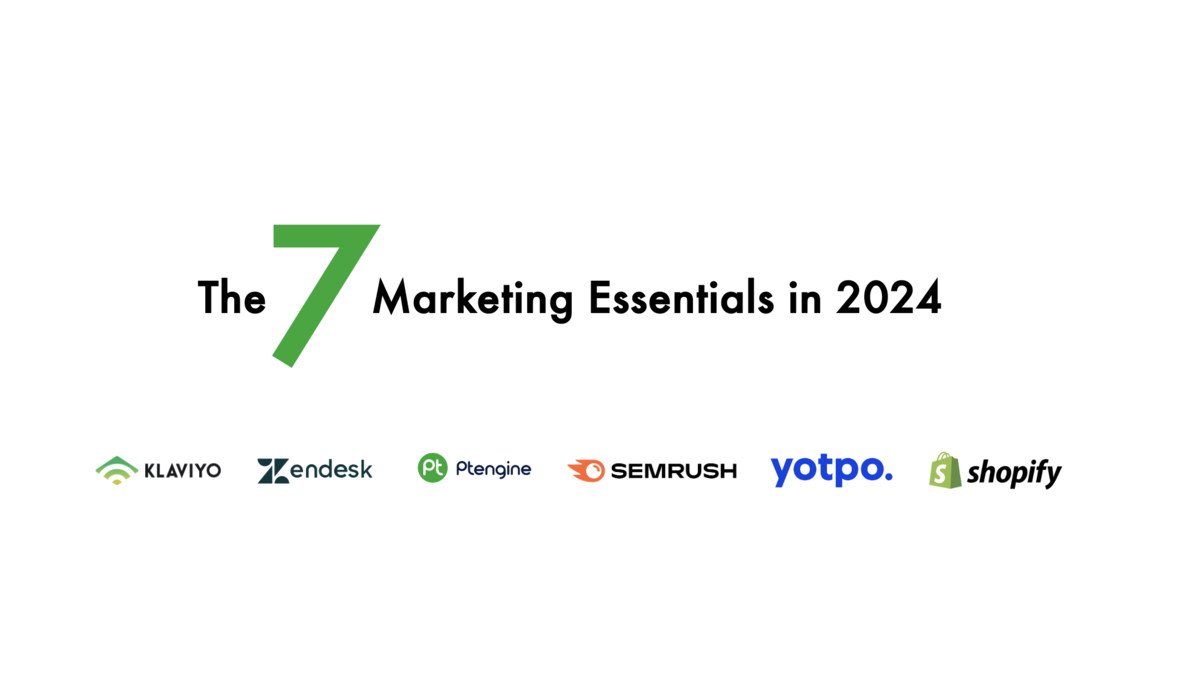
E-commerce Mastery: 7 Essential Marketing Strategies for 2024
2023/12/19
You can read this article in about 39 minutes
Introduction
As we step into 2024, the e-commerce landscape continues to evolve at a breathtaking pace, shaped by new technologies, shifting consumer behaviors, and an increasingly competitive market. In this dynamic environment, e-commerce marketing managers are tasked with not just keeping up, but staying ahead. Success in this arena demands a blend of creativity, adaptability, and a deep understanding of the latest tools and techniques. “E-commerce Mastery: 7 Essential Marketing Strategies for 2024” is your compass to navigate this ever-changing world.
The heart of thriving in today’s e-commerce sector lies in leveraging innovative marketing strategies. With the digital marketplace more crowded than ever, it’s crucial to distinguish your brand and create memorable experiences for your customers. This goes beyond just selling products; it’s about crafting stories, building relationships, and delivering value that resonates with your audience. As marketing managers, your role is pivotal in orchestrating these experiences and driving the growth of your business.
This guide is designed to arm you with a toolkit of the most effective marketing hacks for 2024. From the power of sophisticated tools like Ptengine, enhancing your strategies with A/B testing, exit popups, and heatmaps, to exploring the broader spectrum of digital marketing tactics, we cover it all. You’ll discover insights into personalizing customer journeys, harnessing the power of SEO, engaging with your audience through social media, and much more.
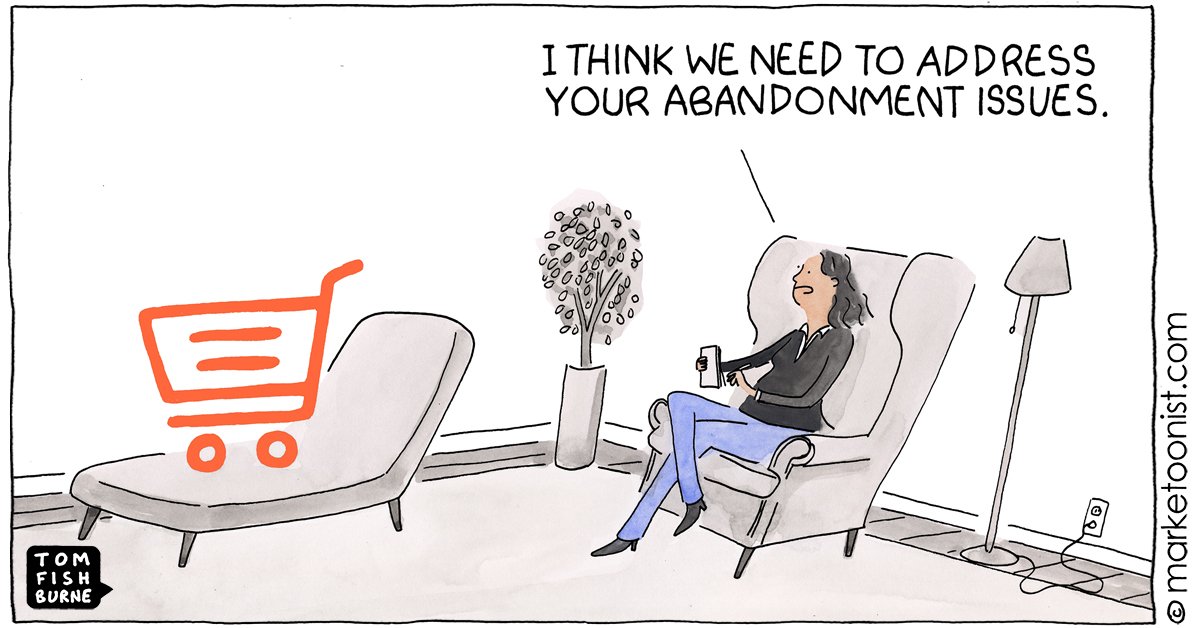
Each strategy presented is more than just a trend; they are tried and tested methods refined for the 2024 market. They are about understanding the nuances of digital consumer behavior and using that knowledge to your advantage. Whether you’re a seasoned marketing veteran or new to the field, these strategies are designed to be accessible, actionable, and impactful.
As you embark on this journey through “E-commerce Mastery,” prepare to unlock new possibilities, drive unparalleled growth, and redefine the e-commerce experience for your customers. Welcome to the future of online marketing.
Tip 1: Enhancing SEO with SEMrush
In the ever-evolving landscape of digital marketing, SEO remains a cornerstone of online visibility and success. As we navigate through 2024, understanding and leveraging the latest SEO trends and best practices is crucial for any e-commerce marketing manager. SEMrush emerges as an indispensable tool in this endeavor, offering comprehensive SEO analysis and robust keyword research capabilities that can significantly elevate your website’s organic search rankings.

Understanding SEO Trends for 2024
SEO in 2024 is all about understanding user intent and delivering content that aligns with it. Google’s algorithms continue to grow smarter, prioritizing websites that offer value, relevance, and a great user experience. Key trends include the importance of mobile-first indexing, the rise of voice search, and the ever-growing significance of local SEO for businesses.
Using SEMrush for SEO Analysis
SEMrush stands out for its ability to provide a detailed SEO analysis, giving you insights into both your website’s performance and your competitors. Here’s how you can leverage it:
- Site Audit: Use SEMrush’s Site Audit feature to identify technical SEO issues on your website, such as broken links, slow page speeds, and crawl errors. Rectifying these issues is essential for improving your site’s health and search engine ranking.
- Keyword Research: SEMrush’s Keyword Magic Tool offers extensive keyword research capabilities. You can discover high-volume keywords, long-tail keywords, and phrases that your target audience is searching for. This insight helps you create content that is both relevant and likely to rank higher in search results.
- Competitor Analysis: SEMrush allows you to analyze your competitors’ SEO strategies. Understanding their keyword rankings, backlink profiles, and content strategies can inform your own SEO efforts and help you identify opportunities to outperform them.
Tips for Improving Organic Search Rankings
- Optimize for User Intent: Ensure your content aligns with the search intent of your target keywords. Whether it’s informational, transactional, or navigational, your content should address the user’s needs.
- Quality Content: Create high-quality, engaging content. Google values content that is informative, well-written, and adds value to the user.
- Backlink Strategy: Focus on building a strong backlink profile. High-quality backlinks from authoritative sites signal to search engines that your content is valuable and trustworthy.
- Mobile Optimization: Ensure your website is mobile-friendly. With the majority of searches happening on mobile devices, a responsive design is essential for SEO.
- Regular Monitoring: Use SEMrush to continuously monitor your SEO performance. Regularly check your rankings, update your content, and adjust your strategies as needed.
By embracing these practices and leveraging the power of SEMrush, you can significantly enhance your website’s SEO performance in 2024, driving more organic traffic and ultimately boosting your e-commerce success.
Tip 2: Optimizing Conversion with A/B Testing via Ptengine
A/B testing stands as a pivotal strategy in the e-commerce world, especially as we venture into 2024. It involves comparing two versions of a web page, email, or other marketing asset to determine which one performs better. With continuous advancements in digital marketing tools, Ptengine emerges as a leading solution to conduct effective A/B testing, providing insightful data that can significantly boost your conversion rates.
The Essence of A/B Testing
A/B testing, at its core, is about making informed decisions backed by data rather than assumptions. In the context of e-commerce, this means testing various elements of your website or marketing materials to see which versions resonate best with your audience. This could involve anything from changing the color of a call-to-action button to tweaking the layout of a landing page.
Utilizing Ptengine for A/B Testing
Ptengine offers a user-friendly platform for carrying out A/B tests, allowing marketing managers to systematically improve their website’s performance. Here’s how to make the most of it:
- Hypothesis Formation: Start by forming a hypothesis. For instance, “Changing the CTA button from blue to red will increase click-through rates.”
- Test Setup: Use Ptengine to set up your A/B test. This involves creating two versions of the page – one with the blue button (Control) and the other with the red button (Variant).
- Data Collection: Ptengine will split your website traffic between these two versions, collecting data on user interactions with each.
- Analysis: After a significant amount of data is collected, analyze the results in Ptengine. It will provide clear metrics on which version performed better in terms of your set goals, such as click-through rates.
- Implementation: If the red button leads to higher engagement, you can confidently implement this change across your site, knowing it’s based on solid, data-driven evidence.

Best Practices for A/B Testing
- Test One Change at a Time: To clearly understand the impact of a specific change, only test one variable at a time.
- Ensure Statistical Significance: Run the test long enough to collect enough data to ensure the results are statistically significant.
- Understand Your Audience: Use insights from previous tests and analytics to inform your hypothesis and testing strategy.
- Continual Testing: A/B testing is not a one-time task. Regular testing should be an integral part of your marketing strategy to continually improve and adapt to changing user preferences.
- Leverage Learnings Across Channels: Apply the insights gained from A/B testing on your website to other marketing channels, like email campaigns and social media.
Incorporating A/B testing into your marketing strategy with tools like Ptengine not only optimizes your website for better conversion rates but also provides valuable insights into your customers’ preferences and behaviors. This data-driven approach is essential for any e-commerce marketing manager looking to excel in 2024.
Tip 3: Streamlining Customer Service with Zendesk
In the e-commerce industry, exceptional customer service is a key differentiator that can elevate a brand above its competitors. As we chart our course through 2024, the importance of efficient, responsive, and personalized customer service becomes even more pronounced. Zendesk, a powerful customer service platform, stands out as a leading solution to streamline customer support operations and enhance customer engagement.

The Critical Role of Customer Service in E-commerce
Customer service in e-commerce is not just about responding to inquiries and resolving issues; it’s about creating a seamless and positive experience for every customer who interacts with your brand. In an era where consumers have endless choices at their fingertips, providing fast, efficient, and empathetic customer service can be the deciding factor in winning and retaining customers.
Leveraging Zendesk for Enhanced Customer Support
Zendesk provides a suite of tools designed to improve every facet of the customer service process:
- Omnichannel Support: Zendesk allows you to manage customer interactions across all channels—email, chat, social media, and phone—from a single unified interface. This ensures no customer query goes unanswered, regardless of how they choose to reach out.
- Automation and AI: Use Zendesk’s automation features and AI-powered bots to handle routine inquiries, freeing up your human agents to tackle more complex issues. This can lead to quicker resolutions and a more efficient support process.
- Self-service Options: With Zendesk, you can build a comprehensive knowledge base that empowers customers to find answers to their questions without having to reach out directly, enhancing customer satisfaction and reducing support tickets.
- Personalization: Zendesk’s advanced analytics and tracking enable you to provide personalized support by giving agents a full view of the customer’s history and preferences.
Case Studies on Improved Customer Satisfaction and Loyalty
Zendesk has been instrumental in transforming customer service for numerous businesses:
- E-commerce Retailer: An online retailer implemented Zendesk to manage their growing customer service needs. By leveraging Zendesk’s ticketing system and knowledge base, they reduced response times by 30% and increased customer satisfaction scores by 25%.
- Technology Start-Up: A tech start-up used Zendesk to offer 24/7 support. With the help of automated responses and a detailed FAQ section, they saw a 40% decrease in ticket volume and a significant improvement in customer loyalty metrics.
By integrating Zendesk into your customer service strategy, you can not only address the present needs of your customers but also anticipate and adapt to future demands. Zendesk’s robust platform ensures that you can provide exceptional service that keeps your customers coming back, fostering both satisfaction and loyalty in the competitive landscape of e-commerce.
Tip 4: Creating Shoppable Content with Shopify
As e-commerce marketing evolves, integrating shopping directly into content has become an essential strategy. Known as shoppable content, this seamless fusion allows customers to make purchases right from the content they are viewing, whether it be a blog post, an image, or a video. In 2024, creating shoppable content is easier and more effective than ever with platforms like Shopify, which enable businesses to turn any piece of content into a direct sales opportunity.
The Rise of Content-Commerce Integration
Content-commerce integration represents the next frontier for e-commerce marketing. It blurs the lines between content consumption and the shopping experience, allowing customers to engage with products in a context that is informative, entertaining, and immersive. This approach not only enriches the customer experience but also streamlines the path to purchase, potentially increasing conversion rates.
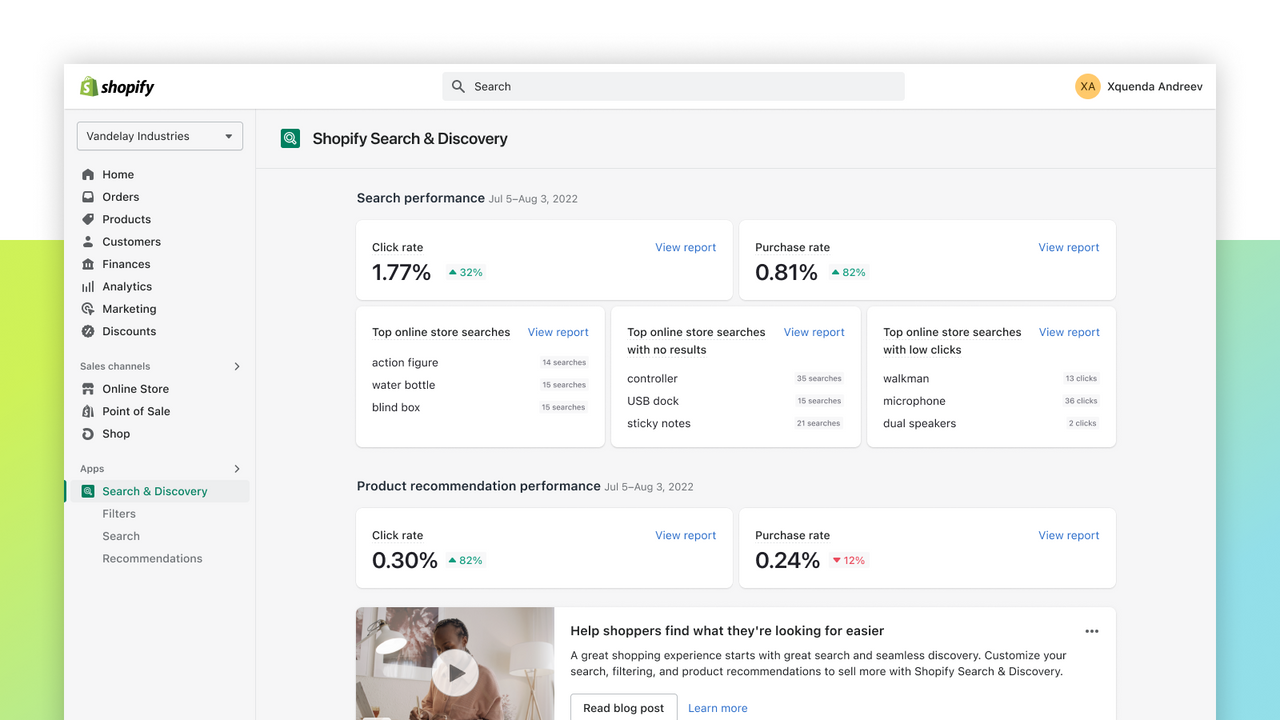
Using Shopify for Shoppable Experiences
Shopify’s e-commerce platform provides the tools necessary to create shoppable content:
- Buy Buttons: Shopify’s Buy Button lets you embed products and collections into blog posts, emails, and more, making it easy for readers to click and buy on the spot.
- Shopify AR: Augmented reality (AR) features can be embedded into content, allowing customers to visualize products in their own space before making a purchase.
- Customizable Storefronts: Shopify’s customizable storefronts can be integrated into websites, blogs, and even mobile apps, offering a consistent and branded shopping experience.
Successful Content-Commerce Integrations
Several brands have harnessed the power of Shopify to create compelling shoppable content:
- Fashion Bloggers: By embedding Shopify’s Buy Buttons into their posts, fashion bloggers have made it effortless for readers to buy featured clothing and accessories as they draw inspiration from the content.
- Home Decor Retailers: Home decor retailers have used Shopify AR to let customers visualize furniture and decorations in their homes directly through their websites, leading to increased engagement and higher sales.
- Cooking Sites: Cooking sites have integrated Shopify’s shoppable recipes, where users can buy ingredients and cooking tools directly through instructional blog posts and videos.
In 2024, creating shoppable content with Shopify is not just about selling; it’s about providing value, convenience, and an enriched shopping experience. By leveraging these integrations, e-commerce businesses can transform passive content viewers into active shoppers, driving sales and fostering brand loyalty.
Tip 5: Increasing Engagement with Exit Popups
Exit popups have become a powerful tool in the e-commerce marketer’s arsenal, serving as a last chance to engage visitors before they leave your site. In 2024, the strategic use of exit popups continues to be an effective method to increase engagement, capture leads, and potentially convert exiting visitors into customers. Ptengine provides a sophisticated platform to design and implement these crucial interactions.

Understanding the Psychology Behind Exit Popups
The effectiveness of exit popups lies in their ability to capture attention at a critical moment. As visitors move to leave your site, a well-timed popup can tap into a psychological pattern known as “loss aversion,” where the potential for loss is a stronger motivator than the potential for gain. A compelling exit popup offers a value proposition strong enough to make visitors reconsider their departure, whether it’s a discount, a freebie, or an exclusive piece of content.
Crafting Compelling Exit Popups with Ptengine
Ptengine enables you to craft exit popups that are not only eye-catching but also highly targeted:
- Design and Customization: Use Ptengine’s design tools to create popups that align with your site’s branding and appeal to your audience’s preferences.
- Targeting Options: Ptengine allows you to target specific segments of your audience based on their behavior, ensuring that the message is relevant to their experience on your site.
- A/B Testing: With Ptengine, you can test different versions of your exit popups to determine which message, design, or offer has the highest conversion rate.
Examples of Successful Exit Popup Campaigns
Businesses have seen remarkable results with exit popups designed using Ptengine:
- Online Fashion Retailer: An online store implemented an exit popup offering a 10% discount on their next purchase if visitors subscribed to their newsletter. This campaign saw a 25% increase in newsletter sign-ups and a boost in sales from returning customers.
- Software Company: A SaaS company used exit popups to offer a free trial period, specifically targeting visitors who spent a certain amount of time on the pricing page but did not convert. This resulted in a 15% uptick in trial sign-ups, with many converting to paid users at the trial’s end.
- Educational Platform: An e-learning website displayed an exit popup with a last-minute offer for a free course module, which led to a significant reduction in bounce rates and an increase in course enrollments.

Incorporating exit popups into your e-commerce strategy with Ptengine can be a game-changer, providing a unique opportunity to engage with customers who may otherwise be lost. By understanding the psychology behind these popups and utilizing Ptengine’s robust features, you can create campaigns that resonate with your audience and drive tangible results.
Tip 6: Utilizing User-Generated Content with Yotpo
In the current e-commerce marketing climate, user-generated content (UGC) has emerged as an authentic and persuasive form of engagement. By 2024, the ability to harness this content has become essential for brands looking to foster trust and community. Yotpo stands at the forefront of this movement, providing robust tools that enable e-commerce sites to collect, manage, and showcase customer reviews and photos effortlessly.
The Power of User-Generated Content
User-generated content is the digital word-of-mouth that can amplify your brand’s message and credibility. It includes customer reviews, testimonials, photos, and any other form of content that comes directly from the user community. UGC acts as social proof, influencing purchasing decisions by showcasing real-life experiences with your products or services. It’s a potent tool for building brand trust and loyalty.
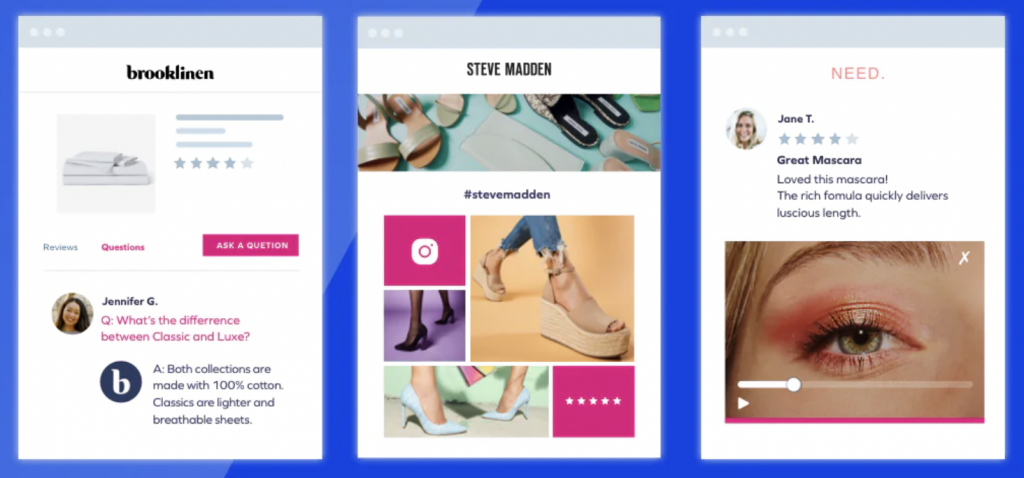
Implementing Yotpo for UGC Collection and Display
Yotpo simplifies the process of integrating UGC into your e-commerce strategy:
- Automated Review Requests: Yotpo can send automated emails to customers post-purchase, inviting them to leave reviews and share photos. This automation ensures a steady flow of fresh content.
- On-Site Widgets: Display reviews and user photos on product pages using Yotpo’s customizable widgets, which can increase conversion rates by providing immediate social proof to potential buyers.
- Content Curation: With Yotpo, you can curate UGC to highlight the best customer content that aligns with your brand values and marketing goals.
Best Practices for Encouraging and Leveraging UGC
To maximize the impact of UGC on your e-commerce site, consider the following best practices:
- Encourage Quality Submissions: Offer incentives for detailed reviews and high-quality user photos, such as discounts on future purchases or entry into contests.
- Engage with Contributors: Respond to reviews and user content to build a community around your brand. Engagement can increase repeat purchases and enhance customer loyalty.
- Highlight UGC Across Channels: Feature outstanding user reviews and photos not only on your product pages but also across social media, in email newsletters, and in advertising campaigns.
- Use UGC to Inform Business Decisions: Analyze the content to understand customer sentiment and preferences, which can inform product development, marketing strategies, and customer service improvements.
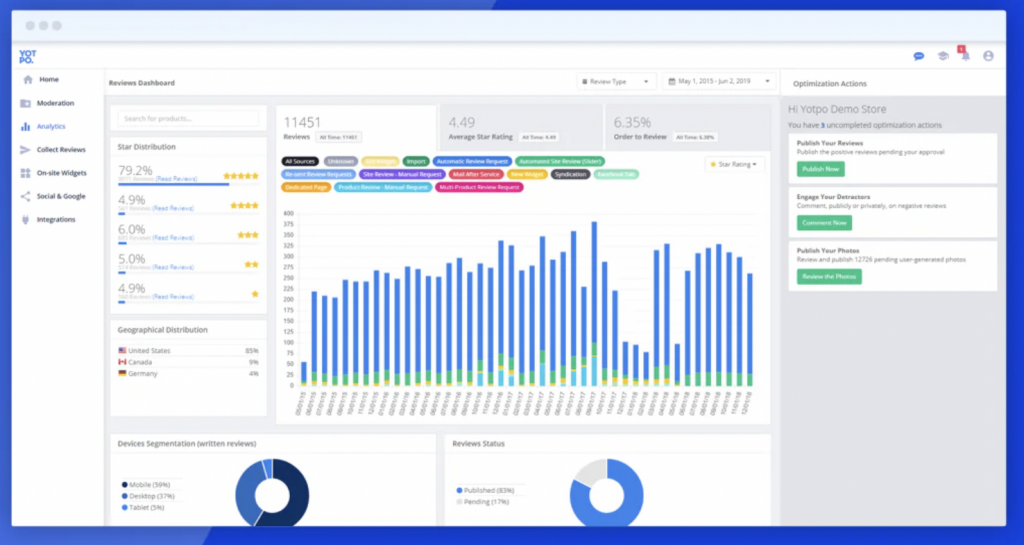
By integrating Yotpo into your e-commerce platform, you can unlock the full potential of user-generated content. Not only does it enhance credibility and provide social proof, but it also creates a wealth of authentic marketing material that resonates with prospective customers. With UGC, you can transform satisfied customers into brand advocates and tap into the collective endorsement of your user base.
Tip 7: Advanced Email Marketing with Klaviyo
In the realm of e-commerce, email marketing remains a critical component for nurturing customer relationships and driving retention. As we delve into 2024, the sophistication of email marketing tools like Klaviyo allows for unprecedented personalization and automation, making it possible to deliver the right message to the right customer at the right time.
The Role of Email Marketing in Customer Retention
Email marketing continues to be one of the most effective channels for maintaining customer relationships. It’s a direct line of communication that can be tailored to address the needs and interests of your audience. Well-crafted emails can keep customers engaged with your brand, encourage repeat purchases, and increase customer lifetime value.
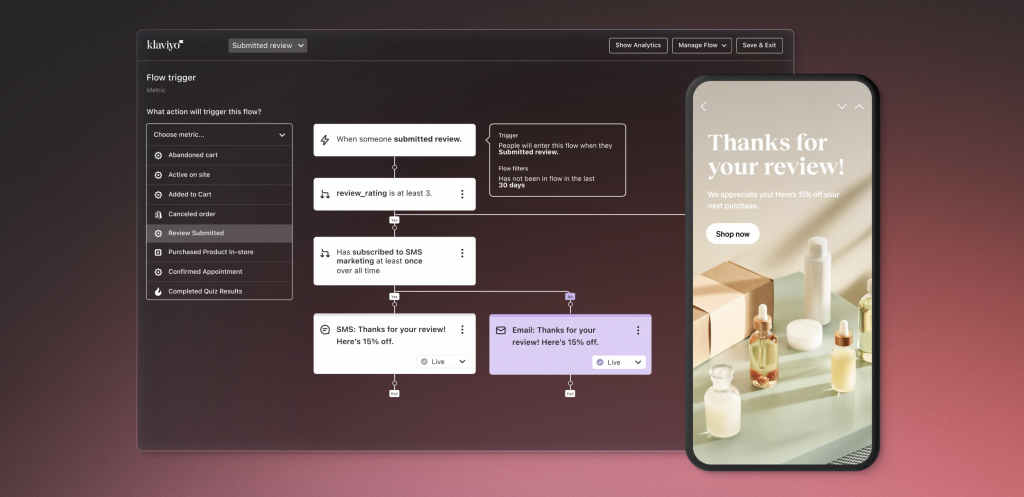
Personalizing Campaigns with Klaviyo
Klaviyo excels in transforming data into personalized customer experiences:
- Data-Driven Personalization: Klaviyo collects and harnesses customer data, allowing you to personalize emails based on past purchase behavior, browsing history, and engagement levels.
- Automated Workflows: Set up automated email sequences for events like welcome series, cart abandonment, and post-purchase follow-ups, ensuring timely and relevant engagement with customers.
- Dynamic Content: Use Klaviyo to include dynamic content in your emails, such as recommended products and personalized offers, to increase the relevance and effectiveness of your campaigns.
Segmenting and Targeting with Klaviyo
Strategic segmentation is key to effective email marketing:
- Segment Creation: Klaviyo allows you to create detailed segments based on a variety of criteria, ensuring that your messages are targeted to the needs of specific groups within your audience.
- A/B Testing: Test different subject lines, email content, and send times to determine what resonates best with each segment.
- Performance Tracking: Utilize Klaviyo’s analytics to track the performance of your emails, providing insights into open rates, click-through rates, and conversion metrics.

By leveraging Klaviyo’s advanced features, you can craft email campaigns that not only retain customers but also turn them into brand advocates. The ability to deliver personalized content, based on data-driven insights, ensures that each email adds value to the customer’s experience, fostering a deeper connection with your brand.
Conclusion
Reflecting on the journey through the top 7 online marketing hacks for 2024, we recognize the profound impact that innovative strategies and advanced tools can have on the success of e-commerce ventures. From optimizing your site’s user experience with Ptengine’s A/B testing and exit popups to enhancing customer service with Zendesk, these tools are designed to refine and revolutionize the way we approach online retail.
We’ve delved into creating seamless shoppable experiences with Shopify, harnessing the authentic voice of the customer through Yotpo, and personalized, data-driven email marketing with Klaviyo. Each tool provides a unique advantage, empowering marketing managers to craft bespoke customer journeys, engage with audiences on a deeper level, and ultimately convert interactions into sales.
The integration of these hacks into your marketing playbook is more than a suggestion—it’s an invitation to be at the forefront of e-commerce growth. As consumer behaviors shift and technology advances, the ability to quickly adapt and implement these tactics will separate top-performing brands from the rest.
The world of e-commerce marketing is continuously evolving, and staying informed is key to success. By embracing these strategies, you align your brand with a future that is dynamic, data-informed, and dedicated to creating exceptional online experiences. As you implement these hacks, monitor their impact, iterate, and innovate, you’ll not only meet the standards of 2024 but also set new benchmarks for e-commerce excellence.
Let these strategies be the starting point for a year of unprecedented growth and customer engagement. The future is bright for those who choose to innovate, personalize, and engage with purpose. Welcome to a new era of e-commerce marketing—may your strategies be as impactful as they are inspired.